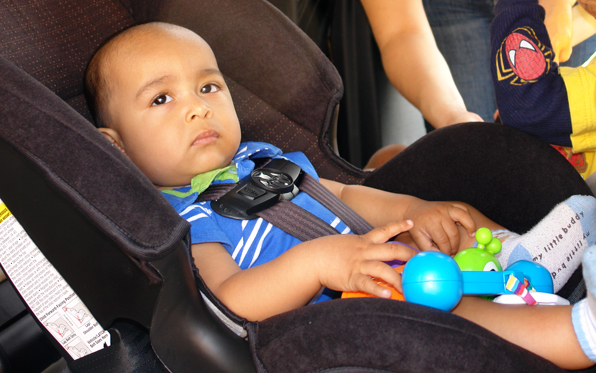Does my long time family dog bite? No, of course not! But experts say don’t be too sure it can’t happen.
“Every dog can bite,” says County Animal Services Deputy Director Dan DeSousa.
About 2,500 dog bites are reported every year in San Diego’s unincorporated area and County Animal Services’ contract cities. Nationwide, emergency rooms see about 1,000 dog bites a day and despite the headlines you see about dog bites, most of them come from family pets.
“The real true story is it’s our own family pet, the ‘we love them and they love us’ dog that is doing the biting,” said Kay Thompson, R.N. of Rady Children’s Hospital,.
As a nurse at the hospital’s Sam S. and Rose Stein Emergency Care Center, Thompson sees the victims all the time. In 2012, there were 294 children who were treated for dog bites, 30 more than the previous year. In about 80 percent of those cases, the children were familiar with the dog.
Alan Laszuk of Carlsbad never thought his 12-year-old family dog Tigger would bite anyone – much less a member of the family. Both the Jindo/Labrador mix and the children have been trained how to act around each other. They’ve grown up together. Last April, Laszuk called 9-year-old David to the kitchen and as he ran toward it, he didn’t see both family dogs sprawled in the doorway. David tripped over one and fell on to the other. Tigger, startled out of his doze, reacted by biting David on the cheek.
“David is the youngest. It was very emotional,” said Laszuk. “We didn’t know what was going to happen.”
The scars are healing now, and Tigger’s never had an incident like that again. Laszuk knows he did everything right but the unpredictable still happened. In most cases, though, DeSousa and Thompson say dog bites are preventable. With summer approaching, many kids get out of school and the hospital sees an increase in dog bite cases: typically five cases each week. May is also National Dog Bite Prevention Month and for those reasons the County’s Department of Animal Services and Rady Children’s Hospital teamed up Tuesday to give out the warning signs on when to leave a dog alone.
- Yawns – he may not be tired, but want you to leave
- Licks his lips
- Displays a half-moon eye – you can see the whites of his eyes under his pupils
- Turns his head away
- Freezes and stares – watch out, he may bite you
Teach your children not to approach strange dogs. They should stand still, wait and see if the dog approaches them.
DeSousa says children should also know what to do if a dog runs up to them or starts chasing them. For one, make like a tree. Stop, fold your branches (arms down) and watch your roots grow (keep your head down). The dog should lose interest and walk away. If the dog knocks you down, act like a rock and crouch down on the ground
DeSousa has tips for dog owners too:
- Keep your dog on a leash when out in public; it’s the law.
- Spay and neuter your pets so they are less likely to bite.
- Socialize your dog so it becomes accustomed to different situations.
If a dog bite occurs, the owner must report it to County Animal Services or local authorities.
“Dogs communicate all the time, it is up to us to understand what they’re trying to tell us,” said DeSousa. “If you see signs your pet is uncomfortable in a situation, remove your dog to make sure it won’t bite.”





